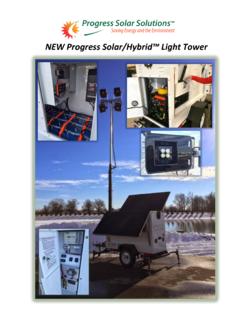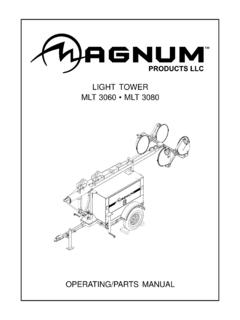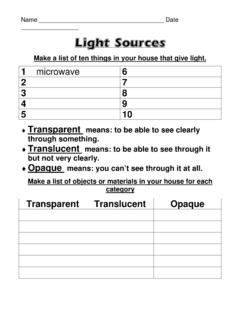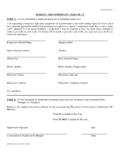Transcription of Reflection and Refraction of Light Waves
1 Science Enhanced Scope and Sequence Grade 6 virginia department of education 2012 1 Reflection and Refraction of Light Waves Strand Force, Motion, and Energy Topic Investigating solar radiation and Earth s energy budget Primary SOL The student will investigate and understand the role of solar energy in driving most natural processes within the atmosphere, the hydrosphere, and on Earth s surface. Key concepts include a) Earth s energy budget. Related SOL The student will demonstrate an understanding of scientific reasoning, logic, and the nature of science by planning and conducting investigations in which i) models and simulations are designed and used to illustrate and explain phenomena and systems. Background Information The entire range of electromagnetic radiation ( Light ) is called the electromagnetic spectrum. The only difference between the various types of electromagnetic radiation is the amount of energy.
2 Sunlight consists of the entire electromagnetic spectrum. The wavelengths detectible by the human eye represent only a very small part of the total electromagnetic spectrum. We see visible Light as the colors of the rainbow. Each color has a different wavelength. Red has the longest wavelength, and violet has the shortest wavelength. The colors of the visible spectrum from the longest wavelength to the shortest wavelength are: red, orange, yellow, green, blue, and violet (ROYGBV). Most scientists no longer include the color indigo, which used to be included between blue and violet. Colors toward the red end of the spectrum have longer wavelengths, while colors near the violet end of the spectrum have shorter wavelengths. Like all electromagnetic radiation, Light carries energy in Waves . Light Waves can transfer energy when they interact with matter. Light travels in straight paths until it hits an object, where it either bounces off (is reflected), is bent (is refracted), passes through the object (is transmitted), or is absorbed as heat.
3 The term reflected Light refers to Light Waves that are neither transmitted nor absorbed, but are thrown back from the surface of the medium they encounter. If this surface is smooth and polished ( , a mirror), each reflected wave will be reflected back at the same angle as the incident wave. The wave that strikes the surface is called the incident wave, and the one that bounces back is called the reflected wave. Refraction means the bending of a wave resulting from a change in its velocity (speed) as it moves from one medium to another ( , Light moving from the air into water). The frequency of the wave does not change. The molecules and other particles in Earth s atmosphere refract or reflect some wavelengths of Light more easily than others. The shorter wavelengths, such as violet and blue, are more readily scattered. The sky looks blue because our eyes are not very sensitive to violet Light , and, therefore, our eyes detect more blue than the violet color.
4 Science Enhanced Scope and Sequence Grade 6 virginia department of education 2012 2 When the sun is low in the sky, sunlight travels through a much greater thickness of atmosphere before it reaches our eyes than it does when it is overhead. More wavelengths of Light are scattered through this greater thickness, including longer wavelengths like green, yellow, and orange. Primarily the red wavelength comes through to our eyes, so the setting sun appears to be red. In this activity, the suspended particles of milk in the water scatter Light in the same way that molecules and other particles in Earth s atmosphere scatter Light . Where the Light has traveled through only the top layer of the liquid, the Light appears Light blue. Where it has traveled through most of the liquid, it appears yellow, orange, or red. If you add too much milk to the water, the liquid will have a yellowish hue just like the atmosphere on a smoggy day.
5 Materials Piece of yarn or rope, or a long coiled spring toy Tall, clear glasses or bottles Water Whole milk Drinking straws Flashlights 60 cm lengths of heavy string 3 m length of heavy rope Vocabulary Absorb, electromagnetic, infrared, radiation, reflect, refract, solar radiation, spectrum, transmit, ultraviolet, visible Light , wavelength Student/Teacher Actions (what students and teachers should be doing to facilitate learning) Introduction 1. Provide students with a 60cm length of string. Ask the students to demonstrate the concept of wavelength by waving the string back and forth on their desk or table. 2. Ask student volunteers to model a long wavelength and short wavelength. Using a 3 meter length of rope, ask students to model an ultraviolet wave (short wavelength), an infrared wave (long wavelength), and the way a wave behaves when it strikes an object and is reflected or absorbed.
6 Note: Some of these concepts should be a review from fifth-grade science. Be sure to relate them to solar energy. Procedure 1. Have each student fill a tall, clear glass or bottle with water and place a sheet of white paper on the back side of the glass so that when students look through the water, they do not see any colors. 2. Darken the room, and have students shine flashlights vertically down through the top of the water in the glasses. 3. Ask students to observe and record: The color of the Light coming from the flashlight The color of Light as it travels through the water Science Enhanced Scope and Sequence Grade 6 virginia department of education 2012 3 The color of the water at the bottom of the glass 4. Turn on the lights. Instruct students to fill their straws with about three cm of milk, add it to the glass of water, and mix. (If they are using soda bottles, they will need to use more milk.)
7 5. Turn off the lights, and again instruct students to shine flashlights down through the top of the water and milk mixture and make the same observations. If students cannot see any variations of color, instruct them to add a few more drops of milk to the mixture and try again. The Light should look blue where it has traveled a short distance through milky water. At the bottom of the container, where the Light has traveled a greater distance, the Light should look yellow, orange, or red. If you add too much milk to the water, the liquid will have a yellowish hue just like the atmosphere on a smoggy day. Observations and Conclusions 1. Discuss with students the data they were able to record, and help them generate explanations of the wavelengths of Light that are being reflected in each part of the liquid. Ask, In which part were long wavelengths being reflected? In which part were short wavelengths being reflected?
8 Why is this so? Instruct students to use the terms in the introduction to help them explain what they observed. You might have them make a drawing to accompany their explanation. 2. Have students extend what they have learned in order to explain real-life situations involving color variations. Be sure the discussion includes the reason why the sun appears to be yellow-white during the day and quite red at sunset. Also, guide students in understanding why the sky appears fairly dark blue on a very cool, crisp winter day and much less blue or even slightly green or yellow on sultry, humid days. Assessment Questions o Why were different colors observed during this investigation? o How does the milky mixture act like Earth s atmosphere? Journal/Writing Prompts o Describe Earth s Energy Budget in words and pictures. o Write a poem about the different types of radiation that make up solar radiation. Other o Make a model of the Light Waves filtered through Earth s atmosphere to demonstrate visible Light .
9 O Create a postcard explaining the color of the sky. On one side of an index card, use colored pencils to draw a landscape that has a blue sky or a sunrise or sunset. On the reverse side, write a quick note to a friend or relative, explaining why the sky has the colors depicted in the picture. Extensions and Connections (for all students) Do the same investigation, but use a liquid of another color to see whether the results will be the same. Do the same investigation, but use a liquid at different temperatures to see whether the results will be the same. Science Enhanced Scope and Sequence Grade 6 virginia department of education 2012 4 Strategies for Differentiation During the experiment, have students work in pairs based on learning profiles. At the end of each step students should describe the results to each other and journal their findings. Create fact cards that contain clues about infrared Light , visible Light , and ultraviolet Light .
10 When a student chooses a card and reads the clue, the other students will write their answers on response cards to show understanding. Use video clips from Internet sources such as Discovery education to enhance students understanding of the visible Light spectrum. Use a mnemonic device, such as Roy G. Bv (Red, Orange, Yellow, Green, Blue, Violet), to help students remember the colors of the visible Light spectrum. Have students use colored tape (highlighter tape, colored electrical tape, colored duct tape) to construct a visible Light spectrum.















